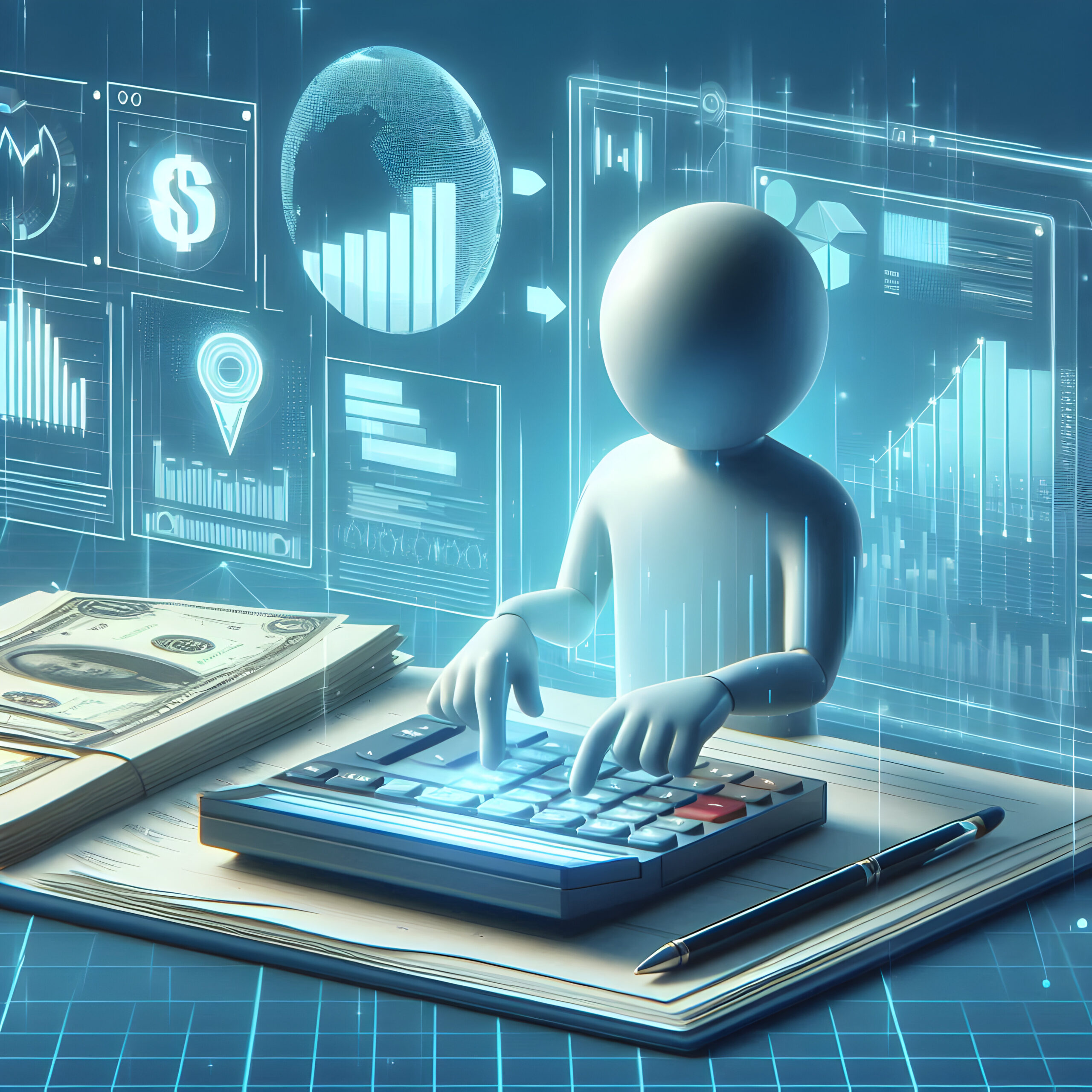AI Agents Explained: The Next Big Thing in Technology
AI agents explained: they’re the groundbreaking innovation poised to revolutionize our digital world. As I delve into this fascinating topic, I can’t help but feel a surge of excitement about the potential these intelligent assistants hold for transforming every aspect of our technological landscape.
From applications to integrations and automations, AI agents are set to redefine how we interact with technology. It’s not just an incremental improvement; it’s a paradigm shift that will reshape our digital experiences in ways we’ve only begun to imagine.
In this comprehensive exploration, we’ll unpack the concept of AI agents, examine their far-reaching impact on technology, discuss the challenges they present, and consider the immense economic potential they offer.
We strongly recommend that you check out our guide on how to take advantage of AI in today’s passive income economy.
Table of Contents
What Are AI Agents?
The Evolution of Artificial Intelligence
AI agents explained simply are the next step in the evolution of artificial intelligence, powered by advanced large language models or foundation models.
You’ve likely encountered AI in the form of chatbots like ChatGPT or coding assistants like Co-pilot. These tools can provide intelligent responses to your queries, but AI agents take this capability to a whole new level.
From Planning to Action
Imagine you’re planning a business trip. You share your preferences and business location with an AI agent. Not only can it suggest an itinerary, but it can also engage in a conversation with you to refine the plan.
But here’s where AI agents explained truly shine: they don’t just plan; they act. An AI agent can take your preferences, book your flights and hotels, and send you a comprehensive package with all the details. It’s like having a personal assistant that never sleeps.
The Three Key Capabilities of AI Agents
AI agents explained in terms of their capabilities reveal three crucial aspects:
- Planning: They can break down complex tasks into manageable steps.
- Tool Access: They can interact with various systems and APIs to perform actions.
- Memory: They possess both short-term and long-term memory, allowing them to remember preferences and learn from past interactions.
These three capabilities enable AI agents to move beyond simple question-answering to taking concrete actions on our behalf.
How AI Agents Will Transform the Technology Landscape
Beyond Traditional Applications
AI agents explained in the context of existing technology reveal a stark contrast. In the past, we built applications, created integrations to connect them, and developed automations to streamline processes.
All of these required explicit programming, with developers writing code to tell computers exactly what to do in various scenarios.
Intent-Driven Computing
With AI agents, we’re moving towards intent-driven computing. Instead of programming every step, we simply communicate our intentions to the AI.
For example, in an automation scenario, rather than coding a complex workflow, you might tell the AI agent, “Extract data from this invoice and input it into the SAP system.”
The AI agent can then construct a dynamic workflow, creating sub-agents as needed to handle different aspects of the task.
Natural Language Programming
Another revolutionary aspect of AI agents explained is the shift from traditional programming languages to natural language instructions.
Instead of writing code, we can use prompts in plain English (or any other language) to define roles and responsibilities for AI agents.
This democratizes technology creation, allowing business professionals and subject matter experts to directly shape AI behaviors without needing to learn complex programming languages.
Current Challenges in AI Agent Development
Ensuring Adequate Control
While the potential of AI agents is immense, it’s crucial to implement proper safeguards. AI agents explained without mentioning safety considerations would be incomplete.
We need to ensure that these autonomous agents operate within defined parameters and don’t overstep their boundaries.
Avoiding Over-reliance
As we become more comfortable with AI agents, there’s a risk of over-reliance. We must maintain a balance, using AI agents as powerful tools while still applying human judgment and oversight.
Ethical Considerations
AI agents explained must include a discussion of ethics. We need robust auditing processes to check for biases and ensure ethical decision-making in AI agents.
The Impact of Future AI Models
It’s worth noting that future AI models, like a hypothetical GPT-5, could potentially incorporate many of the capabilities we currently associate with AI agents.
However, experience has shown that agent frameworks tend to enhance the capabilities of foundation models, suggesting that AI agents will remain relevant even as underlying AI technology advances.
The Economic Potential of AI Agents
A Multi-Trillion Dollar Opportunity
AI agents explained in economic terms represent a staggering opportunity. Some estimates suggest they could create tens of trillions of dollars in value.
This potential stems from the ability of AI agents to augment and, in some cases, replace traditional service roles.
Augmenting White-Collar Work
AI agents have the potential to enhance productivity across a wide range of white-collar jobs. From finance to marketing, legal to human resources, AI agents can assist professionals in performing their roles more efficiently and effectively.
Transforming Customer Experiences
AI agents explained in the context of customer service reveal exciting possibilities. They can provide personalized, round-the-clock assistance, handling complex queries and transactions with ease.
Conclusion: The Future of Human-AI Collaboration
As we look to the future, it’s clear that AI agents will play a pivotal role in shaping our technological landscape.
AI agents explained represent more than just a new tool; they symbolize a new era of human-AI collaboration.
We’re moving towards a world where AI agents work alongside us, enhancing our capabilities and enabling us to achieve more than ever before.
As we continue to explore and develop AI agents, we’re opening doors to unprecedented levels of productivity, creativity, and innovation.
The journey of AI agents is just beginning, and I, for one, am thrilled to see where it leads us. The future of technology is here, and it’s more exciting than we ever imagined.
Frequently Asked Questions about AI Agents
What are the 5 types of AI agents?
AI agents explained can be categorized into five main types:
- Simple Reflex Agents: These agents act based on current perceptions, ignoring past experiences.
- Model-Based Reflex Agents: These agents maintain an internal model of the world to make decisions.
- Goal-Based Agents: These agents work towards specific goals, planning actions to achieve them.
- Utility-Based Agents: These agents make decisions based on a utility function, aiming to maximize overall benefit.
- Learning Agents: These agents can learn from experience and improve their performance over time.
Each type of AI agent explained has its own strengths and is suited for different types of tasks and environments.
What are the rules for an AI agent?
When it comes to AI agents explained in terms of rules, several key principles guide their development and operation:
- Defined Purpose: An AI agent must have a clear, well-defined purpose or goal.
- Ethical Constraints: AI agents must operate within ethical boundaries, respecting privacy and avoiding harm.
- Transparency: The decision-making process of an AI agent should be explainable and transparent.
- Controllability: Humans should maintain ultimate control over AI agents, including the ability to override or shut them down.
- Continuous Learning: AI agents should be designed to learn and improve from their interactions and experiences.
These rules ensure that AI agents explained are not just powerful, but also responsible and beneficial tools.
What is the AI agent framework?
An AI agent framework, in the context of AI agents explained, is a structured approach for developing and deploying AI agents. It typically includes:
- A central controller or orchestrator that manages the AI agents.
- Modules for natural language understanding and generation.
- A planning component that determines the sequence of actions to achieve goals.
- A memory system for storing and retrieving information.
- Interfaces to external tools and APIs that the AI agent can use.
- A learning module that allows the agent to improve over time.
The framework provides a foundation for creating AI agents explained as coherent, capable systems that can understand, plan, and act in complex environments.
How do you create an AI agent?
Creating an AI agent involves several steps:
- Define the Purpose: Clearly articulate what you want your AI agent to do.
- Choose a Framework: Select an appropriate AI agent framework based on your needs.
- Design the Agent Architecture: Decide on the components your agent will need (e.g., planning, memory, learning modules).
- Implement Core Functionality: Develop the basic capabilities of your agent using large language models and other AI technologies.
- Integrate Tools and APIs: Connect your agent to necessary external systems and data sources.
- Train and Fine-tune: Use relevant data to train your agent and fine-tune its performance.
- Test and Iterate: Rigorously test your agent in various scenarios and refine its capabilities based on the results.
- Implement Safety Measures: Ensure your agent has appropriate safeguards and ethical constraints.
- Deploy and Monitor: Launch your agent and continuously monitor its performance and behavior.
Creating an AI agent explained this way ensures a systematic approach to development, resulting in a powerful and responsible AI assistant.

We strongly recommend that you check out our guide on how to take advantage of AI in today’s passive income economy.




